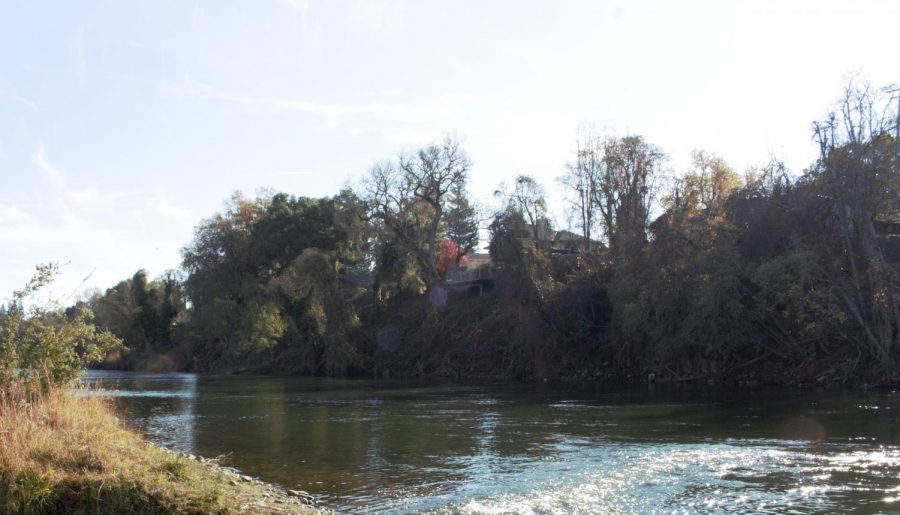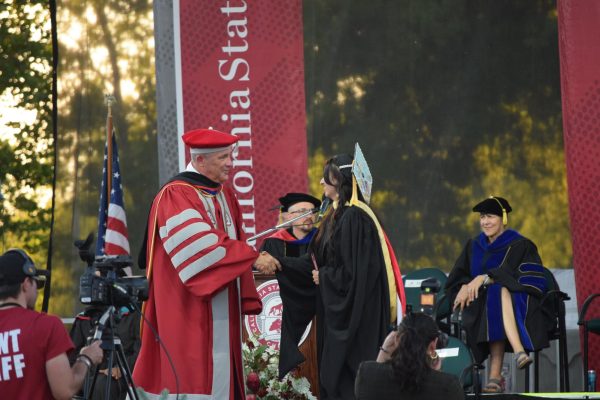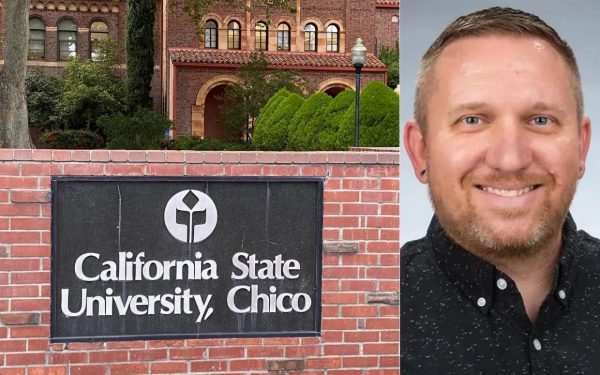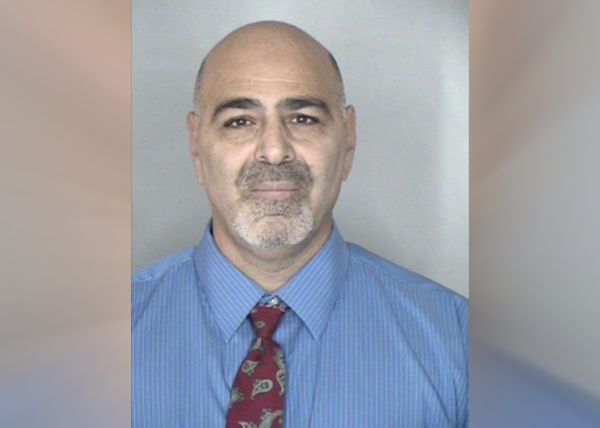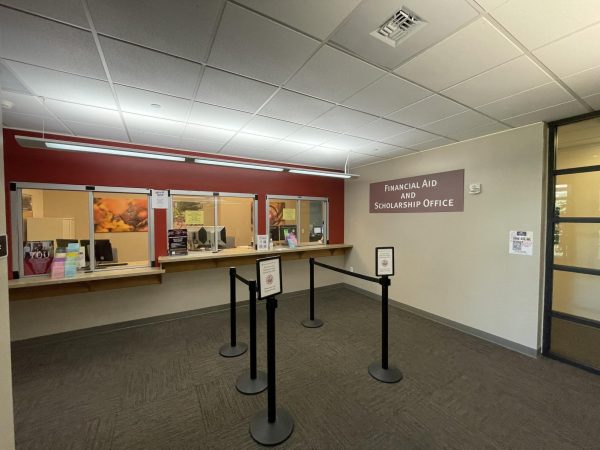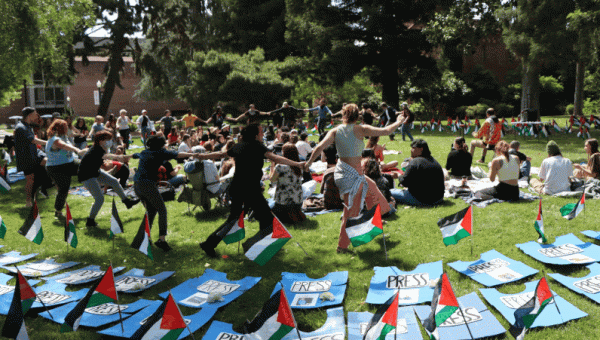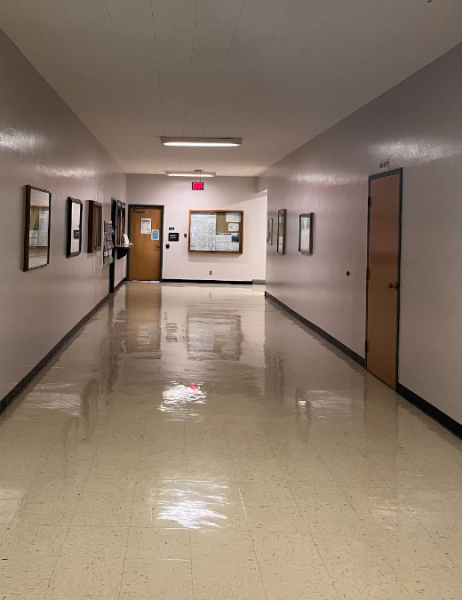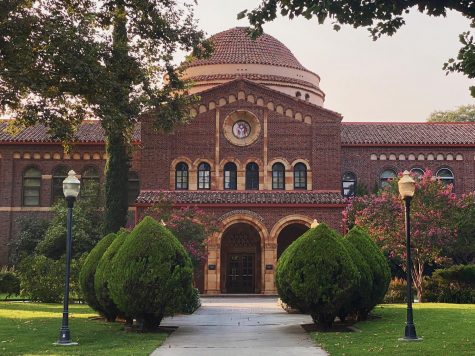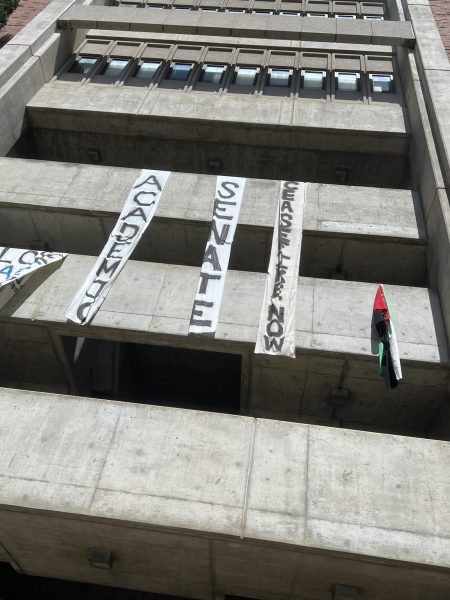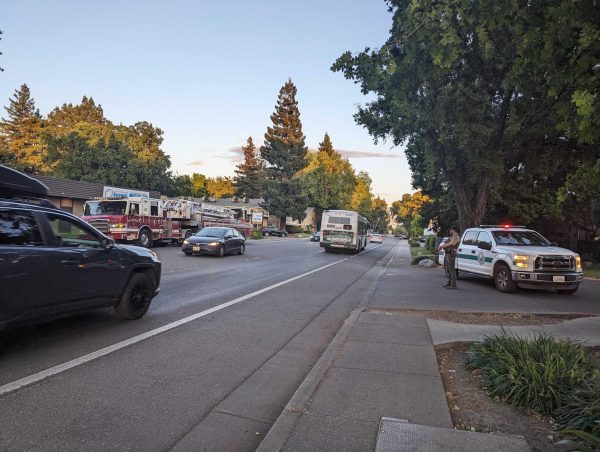Sacramento salmon run fun
The Sacramento River, where the juvenile salmon are to be released.
Grad students from Chico State have been working alongside nonprofit and federal organizations to reestablish and analyze the success of habitats for juvenile salmon in the tributaries of the Sacramento River. Salmon play a crucial role in the Sacramento River’s ecosystem by being one of its top predator fish.
The Coleman National Fish Hatchery on Feb. 4 partnered with the U.S. Department of Fish and Wildlife to release more than 300,000 juvenile Chinook salmon into the Sacramento River, and more than 53,000 juvenile winter Chinook salmon into Upper Battle Creek.
Susan Strachan from Chico State’s Geographical Information Center manages the restoration project. Amanda Banet, assistant professor in the biological science department, has a team of graduate students in-charge of collecting data and tracking overall progress.
Upper Battle Creek is about 63 miles north of Chico. The salmon will eventually pass through Chico, feeding on smaller fish, as they migrate toward the ocean, lurking in the waters of Sacramento River and Mud Creek.
“The salmon released in Upper Battle Creek won’t run through the Big Chico Creek,” Strachan said. “However, they will rear in the confluences of where the river meets creek. At most they will hang out around the mouth of Big Chico Creek while on their way to the ocean.”
Jane Dolan, executive director of Sacramento River Forum, a nonprofit organization that focuses on habitat restoration is the co-project manager. Dolan said the forum has received an approval for a fourth contract.
“A river healthy for fish is a river healthy for the environment and people,” Dolan said. “It’s not really specific to any city or area but improving the ecosystem of our river improves the environment which improves communities.”
The Bureau of Reclamation funds the salmon conservation project, granting almost $17 million toward the conservation effort and restoration of waterways. The Department of Water Resources helps engineer the habitats and tributaries for juvenile salmon to seek refuge. Native American people from the Yurok Tribe help operate heavy machinery. River Partners, a Chico based organization helps with implementation and habitat restoration.
Strachan said salmon have historically reared in the side channels where creeks meet rivers, but heavy fall rain has flooded side channels, lowering beds and preventing beds from developing.
Big Chico Creek is 45 miles long and has four main tributaries: Mud Creek, Sycamore Creek, Rock Creek and Lindo Channel. Chinook Salmon are native to the tributaries of Big Chico Creek. Spring-run Chinook salmon occasionally migrate through Big Chico Creek toward Upper Bidwell Park.
“There’s a broken fish ladder that prevents some fish from accessing the deep cold pools above Bidwell Park,” Strachan said. “It was constructed in the 1950s, and surrounded by boulders, so it’s inaccessible and can’t be fixed.”
Sacramento River salmon run four times a year: spring, fall, late fall and winter. Each run returns to a different part of the Sacramento River to spawn. Fall-run salmon are the most abundant while winter-run salmon have dwindled to critical numbers.
“A single female salmon can lay 1,000 to 17,000 eggs, very few of those eggs actually survive from fertilization to maturity. An average of 3 fish returning for every parent fish that spawns would be considered good production. Many natural and human-related factors cause this high mortality,” according to the U.S. Fish and Wildlife Service’s website.
Salmon are anadromous. They spend their first months and years in freshwater, but spend their formative years in the ocean and return to freshwater tributaries as adults to spawn. Salmon die after spawning and give nutrients to the river’s ecosystem. During salmon season the daily bag limit for anglers is two fish. However, all coho salmon must be released.
Salmon run and spawn dates:
- Spring-run salmon return late March through September and spawn mid-August through early October.
- Fall-run salmon return July through December and spawn early October through late December.
- Late fall-run salmon return mid-October through December and spawn January through mid-April.
- Winter-run salmon return December through early August and spawn mid-April through August.
“We appreciate the leadership and sustained commitment of the U.S. Bureau of Reclamation and the U.S. Fish and Wildlife Service’s Central Valley Project Improvement Act program that have enabled us to accomplish these projects,” Strachan said in a press release.
Melvin Bui can be reached at [email protected] or @Melvinbuii on Twitter.








